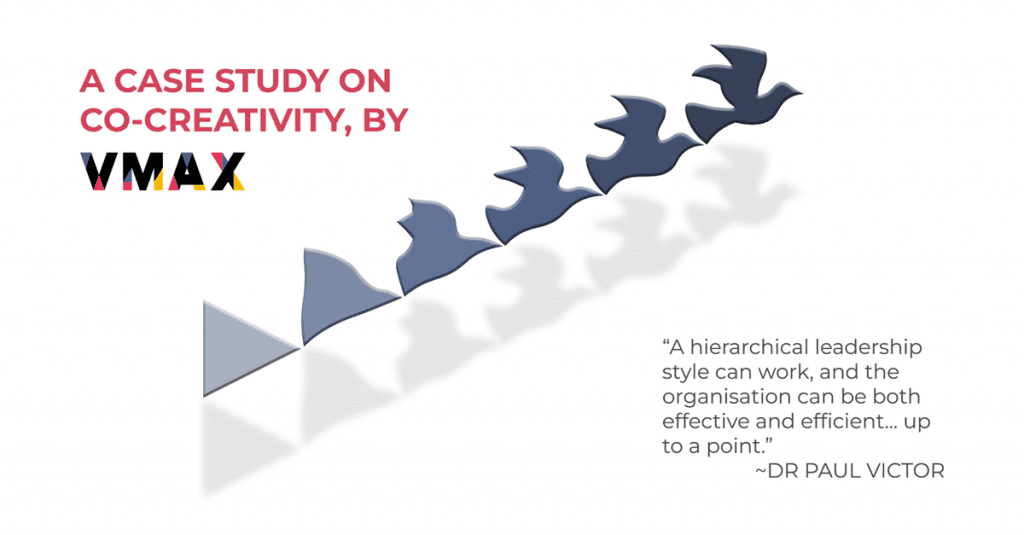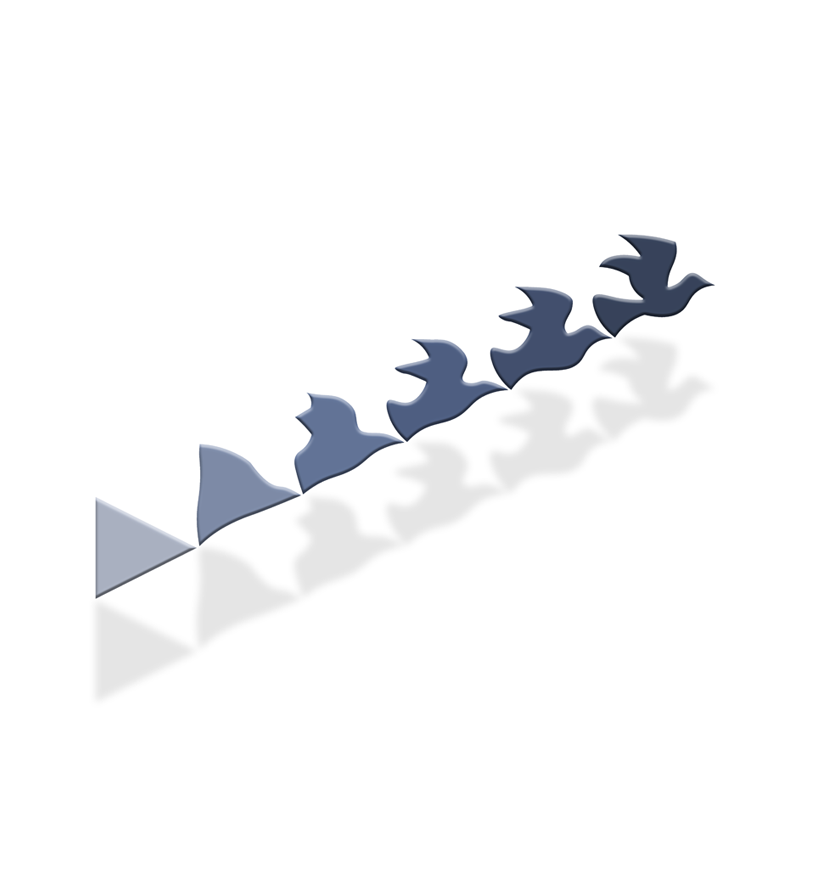Achieving the Co-creative phase of the organisational maturity curve is a true paradigm shift, because many of the behaviours that worked up to this point can become limiting and frustrate further progress.
Up to and including achievement of the Connected phase, a hierarchical leadership style can work, and the organisation can be both effective and efficient, up to a point. The organisation cannot, however, access the higher performance levels of co-creativity, because the very leadership style that used to work is now seen as a lack of confidence or trust in the team, and a limiting factor on engagement and innovation. This is because the controlling leader tends to get more personally involved in decisions and manage direct reports quite closely, resulting in less freedom to operate and less confidence in direct reports being shown.
The following case study exemplifies the paradigm shift challenge and provides some coaching notes to support leaders in similar circumstances.
THE EXPERT LEADER
Jonathan had spent 12 years working within a medium – sized manufacturing company based in the UK and had built a solid reputation as a subject matter expert within his technical field and progressed through to Engineering Director.
As Engineering Director, he had a detailed understanding of his side of the business and was involved in the majority of engineering decisions which had inadvertently created an operating environment which meant that if Jonathan had not approved something then it was unlikely to happen. In essence he was the leading technical expert and was able to marry this with his long experience within the company to make sound strategic decisions. He was widely seen as a key player in the company and when the MD retired it was no surprise that Jonathan was appointed into the role.
As Managing Director, Jonathan continued in his preferred leadership style and worked really hard to grasp the broader remit that he now held, deferring initially to other subject matter experts but gradually becoming more controlling as his confidence in his new role grew.
Jonathan recognised that the organisation was a significant player within its market and had outstanding relationships across the supply chain and customer base which could be used to leverage further growth. He further recognised that this required him to become an enabling leader rather than an expert leader and that securing significant strategic growth within their market was a very real possibility, with the right plans and the right team.
He brought the leadership team together for a series of strategy sessions and they crafted a plan that would secure 20% year on year growth of EBITDA over the following 4 years. The plan was strategically sound and the leadership team were individually and collectively committed to delivering the required performance uplift.
As the team moved into the execution phase, morale was high and early results meant that they were on plan to achieve the year 1 target within 8 months. Throughout this time the team had worked well together, building confidence in each other, in the business plan and in their ability to deliver.
THE LIMITATIONS OF EXPERT LEADERSHIP
Towards the end of Q3 a number of elements on their performance dashboard changed from green to amber and the leading indicators identified that this trend was likely to continue with the first red indicators expected early in Q4. The leadership team meetings began to get a little fraught and Jonathan began to revert to his prior characteristic of stepping in as the expert asserting his view in the decision-making process and relying less on his team. The net effect of the clarity and speed of this approach was an initial performance uplift, but this was not sustained beyond a few weeks.
Johnathan took the view that the uplift was only temporary because the team were not doing as he had asked, and the fact that maybe one or two of them were not able to perform under pressure at this level. This viewpoint led to him becoming more involved in day-to-day decision making and to increasingly engaging in tactical discussions and work reviews. Throughout all of this he demonstrated a high degree of confidence in his ability to lead the company through the downturn and once again became the expert leader.
Whilst this approach was comfortable for him, he recognised that it was not sustainable in the long-term but convinced himself that it was necessary in the short term. Within very few weeks the cohesion in the senior team fell and Jonathan found himself challenging their commitment and capability in meetings, whilst privately exploring ways of replacing some of the team.
Jonathan saw himself as the expert leader almost single-handedly driving business performance with a team that had been unable to deal with the pressure. The team saw Jonathan as a controlling leader who had spoken fine words about co-creative leadership but whose actions differed markedly when difficulties arose. In short, the trust that is a central foundation of the co – creative phase was evaporating quickly and prompting Jonathan to become more hands-on and his team consequently to become more hands-off.
BECOMING AN ENABLING LEADER
It was at this point that Jonathan asked for coaching support with a clear focus on helping him to “fix the problems in his senior team” and potentially support in replacing and rebuilding his team.
The first sessions explored what had happened through time that resulted in the performance falling away and to what extent this was a function of the capability of the leadership team, the market, the competitive environment, customer demands, his leadership style or a combination of all (and possibly more).
The focus became very much on Jonathan’s leadership style for this was an element over which he had significant control and influence, and gradually he came to the realisation that, whilst there were other factors at play within this complex situation, he had been disconnected between words and actions and this had, in turn, resulted in a reduction of trust and a reduction in performance of the leadership team – in short the style he had adopted meant that he was no longer able to access the combined intelligence and expertise of the team.
Coaching notes to the MD
- Take time to ask more questions of the team to fully understand their levels of knowledge and support them to work together with you to solve the problem.
- Consciously develop the co-creative environment and be acutely aware that the pull of power and expertise is very strong and tempting but will, more often than not, fundamentally compromise the development of a co-creative mindset and approach.
- Be more aware of your words and behaviours and the impact they have on others – if you see that you are becoming controlling or directive and they are collaborating less – acknowledge this, discuss it and use it as a developmental learning point for the team.
- Recognise that becoming co-creative is a journey not a point in time shift – invest time in discussing not only what is happening but why it is happening, how people feel and the impact it is having on them. Use these focused reflective sessions to build awareness, knowledge, trust and confidence.
- This is about building huge organisational capability and takes time – recognise that some things may take more time or be more clunky in the short term as people learn this different way of working but focus on the development path and keep your eyes on the prize.
- Co-creativity requires significant levels of trust and confidence as well as shared goals, values and a collective, indeed connected response to difficulties and challenges, as well as opportunities.


